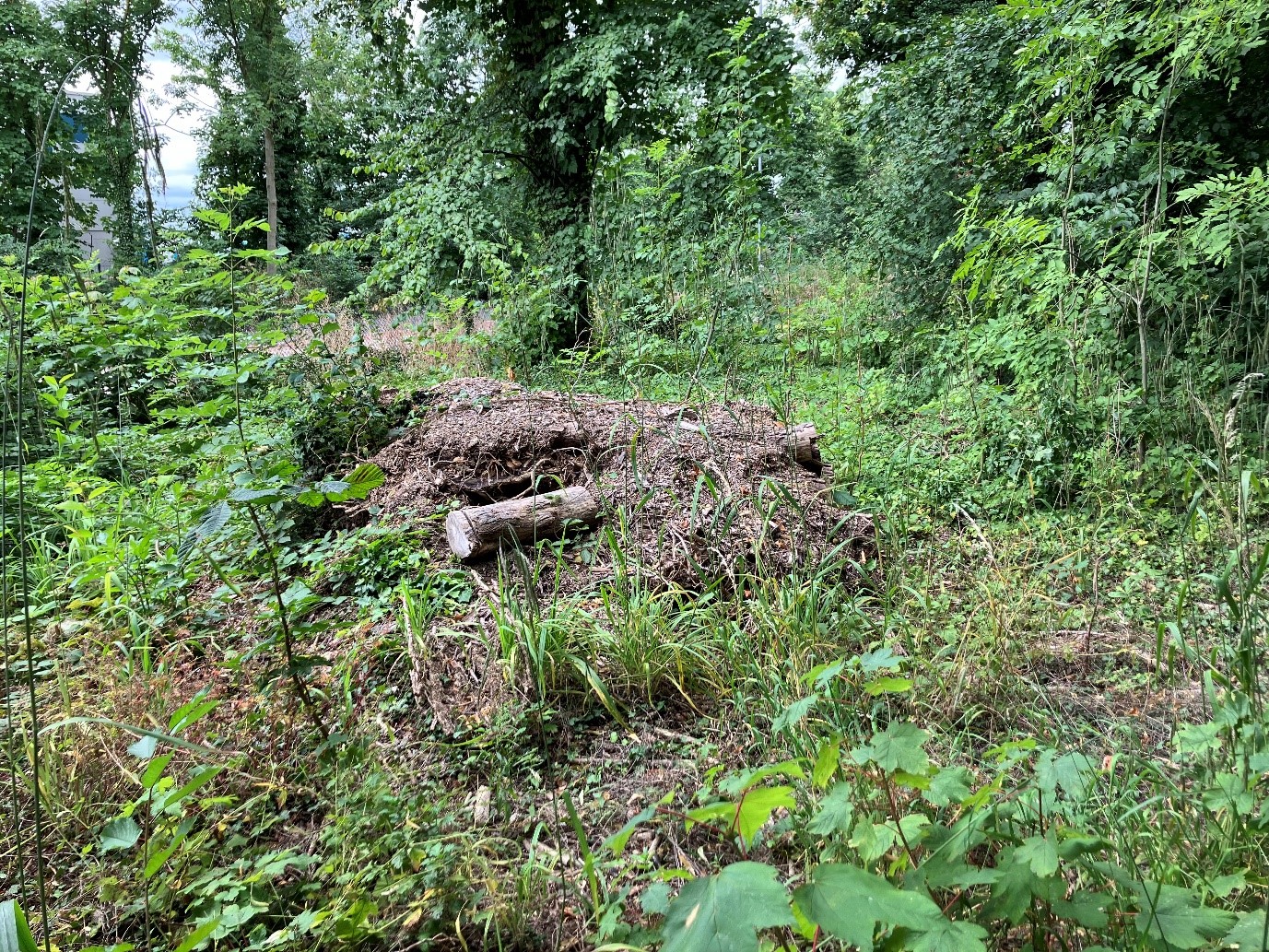We went behind the scenes at our recycling centre in Wythenshawe to see the work being done to enhance biodiversity.
Emma, the Regional Sustainability Champion for SUEZ UK prioritises positive choices for the environment at multiple waste and recycling sites. Emma’s biology degree gives her an in-depth understanding of how best to encourage nature in the space, here’s how she did it:

1: The ‘secret’ wood
The first thing you see when arriving at Longley Lane recycling centre is the woodland the runs the entire length of the site. On closer inspection we found a dense habitat with thick foliage, and a canopy of trees for nesting birds.
“Each spring the forest floor is covered in bluebells which attract bees who work to continue pollinating the plants at the site”, Emma explained.
“Any trees that fall or are felled get chopped up and piled to create hiding places for insets. The rotting trees provide the perfect base for fungi to bloom in the shady depths of the wood.”
2: Reuse instead of single-use
Keeping items in use for as long as possible and stopping them being wasted is vital to reduce our impact on the environment. When chairs and other furniture used by the staff need repairs, Emma sends them to Renew to get refurbished so they can continue being used.
Cutting down on single use items has a big impact on the amount of waste produced. The recycling centres are busy industrial sites and use lots of plastic zip ties to secure fences, signs and more. Swapping the 120 single use zip ties used each month for reusable versions reduced plastic waste and saved £200 in 1 year.
3: Powerful plants
The industrial site is peppered with greenery. Carefully considered plants are an important tool for encouraging nature. But it’s not just pretty flowers, clusters of nettles are dotted around the site. These might not be the first choice for landscaping, but they are crucially important for butterflies. The insects choose the prickly plants to lay their eggs, with both red admirals and peacock varieties preferring nettles to any other plant.
Large wooden planters hold a huge range of plants to keep insects happy. The bees are spoilt for choice with bluebells and fragrant lavender plants. Whilst birds including finches and starlings enjoy a seasonal buffet of blackberries.

4: Award winning loos
When looking to improve sustainability, even the toilets are scrutinised. Emma and her colleague Sadie, Local Sustainability Champion, realised that older toilets on the site were using too much water when flushed. As the toilets were functional, replacing them would have been a waste. So the team researched how to combat the soggy problem in the most sustainable way.
They discovered a simple device that limits the amount of water that gets flushed. After fitting the device into 6 toilets they saved a tidal 10,000L of water in just 1 year.
For the innovative idea the pair won a SUEZ ‘Best New Idea’ award in 2023.

5: Living roofs
Making room for nature means considering it when building. When the recycling centre needed new wheelie bin storage, they wanted the new piece of equipment to be as sustainable as possible.
Starting with the materials, choosing natural wood uses fewer natural resources and has the least impact on the environment when compared to man-made materials.
Realising there would be several square feet of space on top of the store inspired the sustainability champions to create a living roof. This is essentially a planting area that runs the length of the structure. Plants, mosses and grasses will be added and will become a sanctuary for local insects.
‘Small changes can have a real impact and are really easy to do. Things like not mowing the grass and letting brambles grow encourages wildlife and is something anyone can try.’ Emma says.